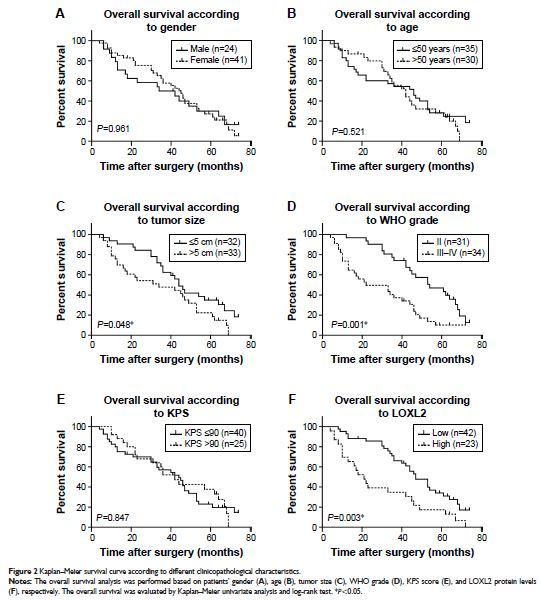108985
论文已发表
注册即可获取德孚的最新动态
IF 收录期刊
- 3.4 Breast Cancer (Dove Med Press)
- 3.2 Clin Epidemiol
- 2.6 Cancer Manag Res
- 2.9 Infect Drug Resist
- 3.7 Clin Interv Aging
- 5.1 Drug Des Dev Ther
- 3.1 Int J Chronic Obstr
- 6.6 Int J Nanomed
- 2.6 Int J Women's Health
- 2.9 Neuropsych Dis Treat
- 2.8 OncoTargets Ther
- 2.0 Patient Prefer Adher
- 2.2 Ther Clin Risk Manag
- 2.5 J Pain Res
- 3.0 Diabet Metab Synd Ob
- 3.2 Psychol Res Behav Ma
- 3.4 Nat Sci Sleep
- 1.8 Pharmgenomics Pers Med
- 2.0 Risk Manag Healthc Policy
- 4.1 J Inflamm Res
- 2.0 Int J Gen Med
- 3.4 J Hepatocell Carcinoma
- 3.0 J Asthma Allergy
- 2.2 Clin Cosmet Investig Dermatol
- 2.4 J Multidiscip Healthc

胶质瘤中赖氨酰氧化酶样 2 的临床意义和功能机制
Authors Du XG, Zhu MJ
Received 29 January 2018
Accepted for publication 21 March 2018
Published 9 May 2018 Volume 2018:11 Pages 2699—2708
DOI https://doi.org/10.2147/OTT.S164056
Checked for plagiarism Yes
Review by Single-blind
Peer reviewers approved by Dr Federico Perche
Peer reviewer comments 2
Editor who approved publication: Dr XuYu Yang
Introduction: Glioma is the most frequent malignancy of the adult central
nervous system with high recurrence risk and poor prognosis. Understanding the
biological molecular mechanisms involved in glioma progression is critical for
studying oncogenic mechanisms and improving prognosis. Lysyl oxidase-like 2
(LOXL2) is a kind of lysyl oxidase catalyzing the formation of peptidyl-lysine
residues and promoting intramolecular cross-linking, especially for proteins in
extracellular matrix. Our study explored the expression pattern of LOXL2 in
glioma for the first time and found that its high expression was associated
with larger tumor size and advanced tumor grade (P <0.05).
Moreover, univariate and multivariate analyses revealed LOXL2 as a novel
independent prognostic factor for the overall survival of glioma
patients.
Methods: To evaluate the detailed functional roles of LOXL2, we tested its
oncobiology characteristics in U87-MG cells with overexpression and knockdown
experiments.
Results: Cellular results demonstrated that LOXL2 overexpression enhanced
cell proliferation and invasion, while LOXL2-siRNA attenuated cell viability.
Furthermore, our data identified the participation of E-cadherin, Snail1, Src,
and FAK proteins downstream of LOXL2. Notably, by using immunoprecipitation and
mass spectrometry strategies, we initially verified the interaction between
LOXL2 and HDAC2, indicating the existence of a protein complex containing
LOXL2/Snail1/HDAC2. Additionally, the expression of HDAC2 protein was highly correlated
with that of LOXL2 in clinical glioma tissues (P =0.02),
further implying the synergic oncogenic roles of these 2 proteins.
Conclusion: LOXL2 is a promising prognostic biomarker and may be further
evaluated as a potential drug target for patients with glioma.
Keywords: glioma, HDAC2, invasion, LOXL2, prognosis
